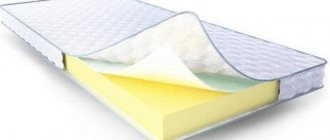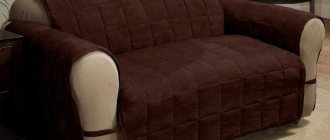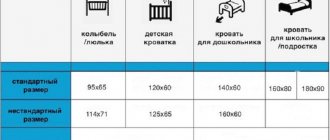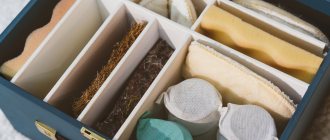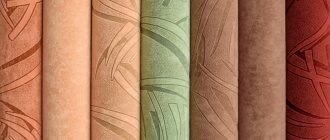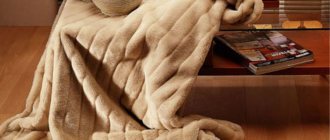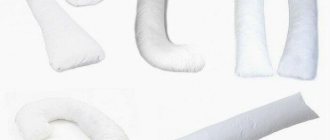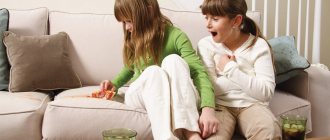28.07.2021
Over time, even in high-quality and expensive upholstered furniture, the seats and backs are compressed and deformed. If the sofa or chair is still in good condition, then you can repair it yourself by replacing the filling with a new one. You can use foam rubber (foamed polyurethane) as it. But there are many types on the market, each of which has both positive and negative reviews on the Internet. And an unprepared buyer will simply get confused in this diversity. We talk about what type of foam rubber to use for a sofa or other upholstered furniture in this article.
Share with friends:
Criteria for choosing foam rubber
This material is an elastic polyurethane foam (PPU), characterized by such useful qualities as:
- elasticity
- the material can bend in any direction, take any shape and restores its shape after the cessation of physical impact on it; - elasticity
- furniture foam provides support for any weight - safety
- the material is non-toxic and does not contain allergens, does not form small dust particles.
The quality and functionality of this material are determined by the following characteristics:
- density (in kg/m³)
. The value of this indicator directly proportionally affects the service life of the material; - compressive stress (in kPa)
. Load-bearing capacity of polyurethane foam, how much weight polyurethane foam will support; - residual deformation (in %)
. This is an indicator that determines the ability of foam rubber to restore its size and shape after the cessation of mechanical impact on it, by what amount the foam will sag during operation; - tensile strength (in Pa)
. This is the threshold value of the tensile force, when exceeded, the material breaks, the strength characteristics of the material; - comfort
. A dimensionless characteristic that determines the ability of foam rubber to provide support, distribute load and softness with slight compression.
Foam rubber brands
Factory-made polyurethane foam comes with markings that include letters and numbers that indicate its performance characteristics and read as follows:
- letter pair - PPU class;
- the first pair of numbers is density (in kg/m³);
- the last two indicators are the compressive stress (in kPa).
Classification of polyurethane foam. Foam rubber is divided into the following categories:
- ST (standard)
- the main and most common type of foam rubber, made from one base polyol, characterized by moderate rigidity and good strength; - HL (the hardest)
- has a high load-bearing capacity to withstand significantly greater loads compared to the standard class; to support the shape and cushioning, it is this category of foams that is used as a filler for the bottom layer of the product. - EL (increased rigidity, unlike standard ST grades)
- is characterized by maximum strength and hardness, and can withstand higher weight; - HS (soft and ultra-soft)
is the most flexible of all classes of foam rubber, thanks to its surface softness it makes products made from it comfortable; - HR (highly elastic)
- has both low initial stiffness and high load-bearing capacity, providing the maximum level of comfort; - LR (soft, viscoelastic)
- characterized by high viscosity and the ability to retain its given shape for some time after cessation of exposure (memory effect); - LL (latex-like foams)
- hypoallergenic material, a replacement for latex, freely allows air to pass through, for example, neolatex LL5020 is used as a filler for the top comfortable layer, durable;
Foam rubber is supplied in the following forms:
- leafy
_ This type of material is rectangular sheets with a width of at least 600 mm and a thickness of 10–1000 mm. At the request of the customer, they can be cut to non-standard sizes in production; - roll
. This foam rubber is made in the form of strips no more than 30 mm thick, rolled into reels for easy storage. This material often comes with a textile (synthetic or natural) backing; - blocky
_ This foam rubber is available in the form of blocks of various sizes. Immediately after production, its outer surface is covered with a dense crust, which is then removed. - contour cutting
. A foam rubber product is cut out according to a special drawing using high-precision CNC equipment; most often, such parts are used in furniture production for the manufacture of seats, backs, and armrests.
Brands of furniture foam rubber
Modern production uses the following grades of polyurethane foam:
- ST is a standard raw material containing a polymer such as polyol (polyesters). The rigidity of products is achieved by selecting the ratio of the components of the main composition. The result is sheets that differ in characteristics. Basically, at least 2 types of polyol are used.
- EL - increased rigidity.
- HL - hard, consist of different types of polyol.
- HS - soft and super soft. Special polyester is used in production instead of ST or in addition to it.
- HR - high elasticity. The composition contains only polyols in 2 or 3 combinations.
- Special - non-flammable, viscoelastic.
The first brand's recipe includes special melamine powder, PHD polyols from Bayer, and flame retardants as additives. Melamine provides fire resistance, but at the same time it negatively affects the properties of furniture foam rubber. Viscoelastic grades contain polyesters and isocyanates.
The most common brands of furniture filler are:
- HS2520 - monolithic amplifier is used on the back of a sofa with a load of 80 kg;
- HS3030 - maximum weight 100 kg;
- HS3530 is the best foam rubber for upholstered furniture; backrests with a load of 100 kg and seats with a load of 80 kg are made from it.
Foam rubber is marked according to 3 indicators: type, density and hardness . For example, brand EL2540 is a rigid sheet with a density of 25 kg/m3 and a hardness of up to 3.2 kPa.
Finally, what is important to consider when choosing foam rubber?
Let's consider the use of different types of foam rubber for filling using the example of a sofa. This piece of furniture most often requires repair due to its intensive use. But the material selection principles used in this example also apply to armchairs, chairs, sofas and other pieces of furniture. To correctly decide which foam rubber to choose for the sofa, you need to remember 3 important points:
- the sofa consists of several functional elements (seat, back, armrests), which experience different loads, and therefore are filled with material of different densities and hardness;
- if the sofa is used as a place to sleep and relax, then its seat and back, which play the role of a bed, must be ensured with maximum softness and comfort;
- The softness of this piece of furniture can be ensured either solely by the filler or by its combination with a block of springs.
The standard sofa padding scheme looks like this:
- for the load-bearing base in the seats, hard foam rubbers with a minimum density of 25 kg/m3 are used, for example, the budget EL2540, the more durable and comfortable EL2842 or the very hard EL4060;
- if the sofa is also used as a place to sleep, then above the layer of hard polyurethane foam you need to lay a 3-centimeter layer of soft material that provides good support for the body, for example, LR5014S “Memoryx” with shape memory effect or HR5535 with orthopedic properties.
- For backrests, headrests and armrests that do not bear a large weight load, you can use foam rubber of the EL2040 and ST1825 brands.
Sheet foam rubber for a sofa or bed
When choosing sheet foam rubber for a sofa or bed, it is important to consider the technical characteristics of the material. The following indicators will tell you how suitable the polyurethane foam you have chosen is for the required furniture products:
- density - indicated after the brand designation in the form of two-digit numbers; for example, a density of 20-30 kg/m3 is suitable for the backs and armrests of a sofa, and sheet foam rubber with a value of 28 kg/m3 is used for padding a bed mattress;
- hardness - indicated by the next pair of numbers after the density indicator, depending on the purpose of the product - this is numbered from 15 to 45, where the maximum number indicates the hardest filler;
- strength - guarantee the wear resistance of the product, resistance to tearing and stretching, as well as long service life;
- residual deformation - indicate how quickly polyurethane foam can return to its previous shape.
Additional recommendations
There are several more nuances to replacing old foam rubber in furniture.
- Compliance of the material with the weight load
. For example, less dense and soft foam rubber is more suitable for children's furniture. It is better to fill armchairs and sofas used by adults with high-density and medium or high hardness filler with small softening layers. This will ensure the furniture has a long service life. - Use of damping layers
. Between the base on which the foam rubber is located (it can be springs or lamellas) and the filler itself, a layer of dense and durable material, for example, felt, should be laid. It will protect the relatively delicate polyurethane foam from damage by hard parts. - Replacement of all filler
. Even if the foam on your sofa has deteriorated only on the seat, it is better to replace it with new one also on the armrests and back. - Combination of different types of filler
. Using foam rubber of the same brand and with the same characteristics in an entire piece of furniture is ineffective. The human body exerts different loads according to its structure and the shape of the furniture itself. If you fill a chair or sofa with the same filling, its owner will quickly get tired and feel discomfort.
If you are planning to update your furniture, but do not know what is the best filling for a sofa or chair, contact our company. We will offer various types of foam rubber and help you find the one that best suits your needs and the characteristics of the furniture itself. You can buy the filler immediately on our website or by placing an order by phone.
What density of foam is needed?
It is generally accepted that sofas and mattresses require foam rubber of different densities. For mattresses, they usually buy a softer one, and for sofas, a denser one. However, this opinion is wrong. Density is such an important property that it is impossible to unambiguously answer the question of what density furniture foam rubber is needed for a mattress or sofa.
A mattress usually uses a combination of materials. Here, the filling requirements are so high that it is simply impossible to choose just one type. After all, a person’s sleep and his well-being throughout the next day will depend on the softness, elasticity and density of the mattress. If the mattress is too soft, the spine will get tired, and on a hard bed it will be difficult to relax.
In the manufacture of high-quality mattresses, as a rule, several materials are used. Sofas also combine materials of different densities. However, this is due to other reasons. First of all, these are economic reasons - cheaper types with low performance properties are chosen for armrests and backrests.
For the seat, several brands of material are most often chosen. The lowest layer is usually made of hard foam. Medium – soft or elastic. And at the end they are covered with padding polyester or coconut coir. The same order of layers is used for the mattress. This provides not only comfort, but also a long service life.
